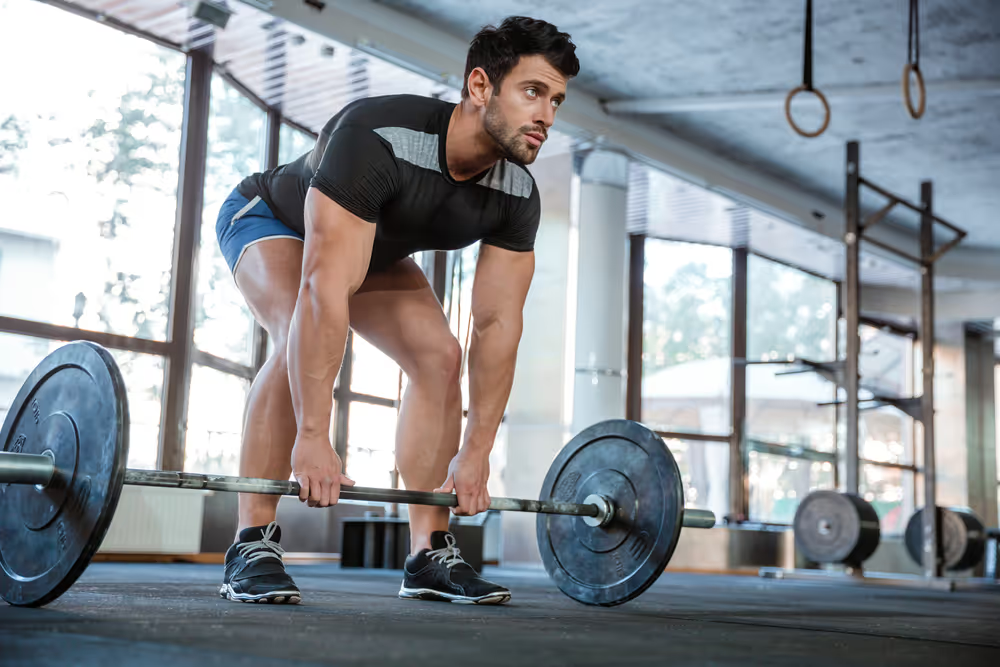It’s that time of year again, Doughnuts & Deadlifts is back! It’s time for Wilmington and surrounding area athletes to showcase their strength on the deadlift platform. As a performance physical therapist, I want to debunk the myths about deadlifts being unsafe or “bad” for your back.
The deadlift is a powerful exercise that can help you build strength and muscle mass, but it is also one of the most misunderstood exercises. Many people believe that deadlifts are bad for your back, and that they can cause serious injuries. However, this is simply not true. In fact, when done correctly, deadlifts can actually be very beneficial for your back health.
One of the biggest myths about deadlifts is that they put a lot of strain on your back. While it is true that deadlifts do involve your back muscles, they also engage multiple other muscle groups, including your shoulders, legs, hips, and core. When done correctly, deadlifts actually help to strengthen your back muscles and improve your spine stability.
Another common myth is that deadlifts can cause back injuries. Again, this is only true if you are using improper form. When done correctly, deadlifts are a safe exercise that can help to prevent back injuries. However, if you round your back or lift too much weight, you can put yourself at risk of injury.
Finally, some people believe that people with back problems should not do deadlifts. However, this is not necessarily true. Deadlifts can be modified to be safe and effective for people with back problems. In fact, deadlifts can actually be used to help rehabilitate back injuries.
Keep reading below for my top 3 tips to ensure proper form during your deadlifts!
- Brace your core
Bracing does not involve “sucking in.” In fact, we want to create pressure to support our spine 360 degrees. Most people are good at using their six pack muscles called the rectus abdominis, but this can lead to a “doming” at the belly and can actually cause extra compression at the spine. Most of my patients benefit from cueing for bracing laterally. Check out these two variations for learning to brace your core laterally! Using a light band or a lifting belt are great tactile cues to learn this technique.
- Set your feet
Two of my favorite cues:

Set your foot in a tripod position: Think about your foot as a tripod, using your big toe, little toe and heel as your 3 points of contact. As you press these 3 points into the ground, it will begin to activate the inside arch of your foot. Keep your feet active throughout the lift.
Spread the earth with your feet: If the tripod cue doesn’t make sense, imagine you have a piece of paper under your feet and you are trying to split it down the middle without lifting your feet.
- Set your shoulders
This is key! Engage your lats to take the slack out of the bar. You can do this by trying to “bend the bar” or “pull the bar apart”. Whichever cue works best for you, use it to take the slack out of the bar. You’ll know you’ve done it when you hear a subtle “click”.
If you hear the click and can set your lats, but have trouble keeping them engaged as you perform multiple reps, try this drill which promotes lat activation throughout the deadlift.
The last piece of the puzzle is putting it all together. Check out this video to see it live! Start by practicing each cue on its own under light load before putting them all together and increasing the weight. Give these drills a try and send us a message on Instagram to let us know how it’s going. Happy Deadlifting!
In good health,
Dr. Eliza Cohen
Performance Physical Therapist + Wellness Consultant
Wilmington, NC
Follow here for more performance and nutrition tips: @conquermovementpt @doctor_cohen14

